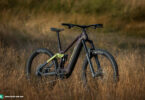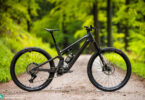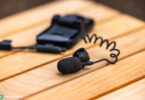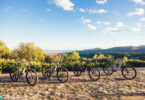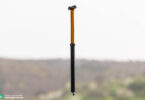It’s finally here! We’ve finally been able to test the new Haibike HYBE, which was announced way back in mid-September. Although the initial hype surrounding the HYBE has died down, Haibike’s 170/160 mm race eMTB with mixed wheelsizes keeps causing a stir. This is partly due to the fact that the € 10,000 flagship model comes equipped with a Bosch CX Race motor, which is meant to make it suitable for Racing. We tested whether this is true!
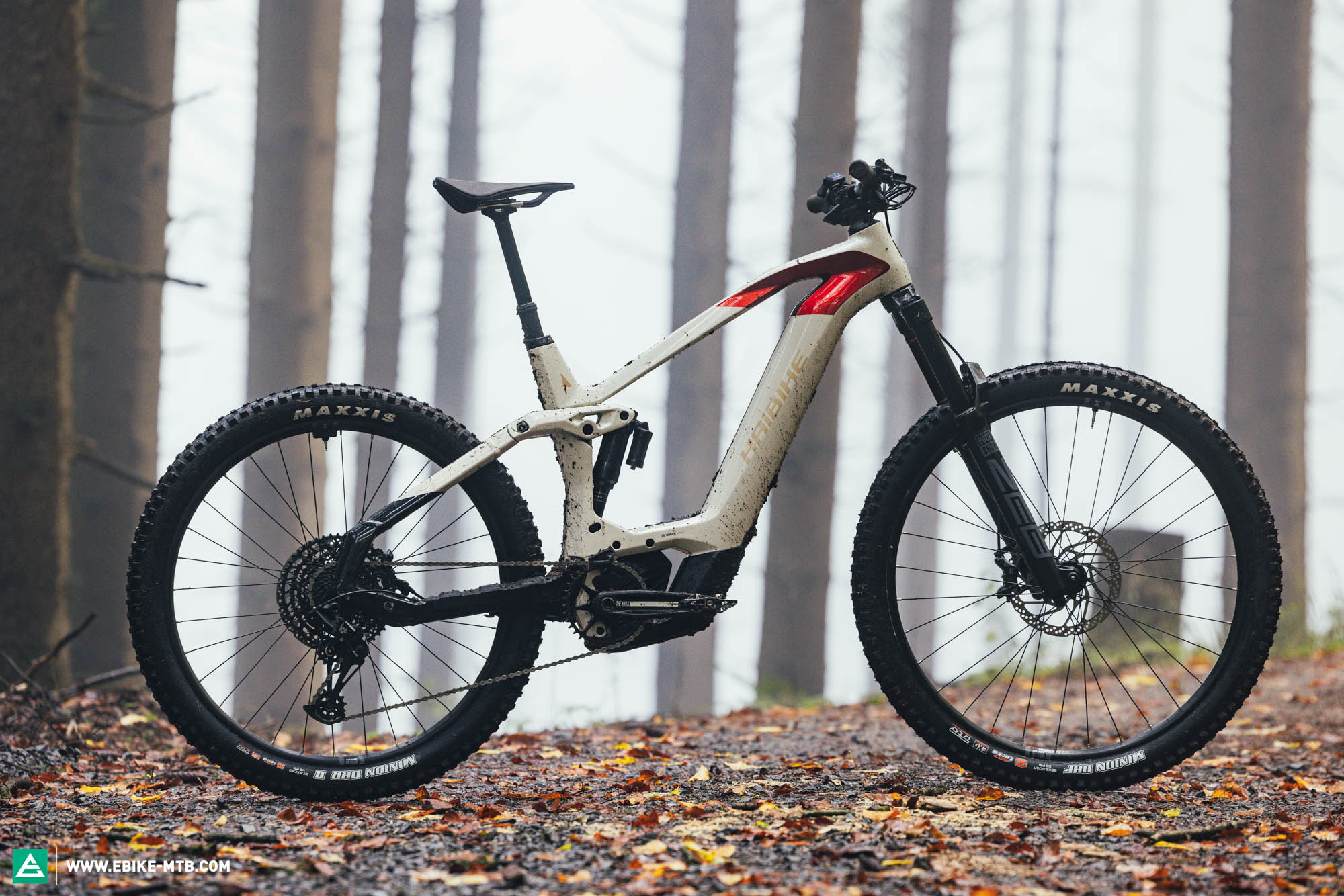
26.14 kg in size L | € 7,399 | Manufacturer’s website
It’s 1995, the Schengen Agreement is bringing Europe closer together, and a new bike brand is born: Haibike. However, back then, eBikes were nothing more than a wild fantasy and it wasn’t until 15 years later – in 2010 – that Haibike proudly presented their eQ Xduro SL, which rolled on small 26″ wheels. Yes, those were the days. Since then, the eMTB market has evolved dramatically, with manufacturers performing all sorts of technical wizardries, from light-assist motors, which Haibike packed into their LYKE light-eMTB, to nearly-seamless integration of motor systems.
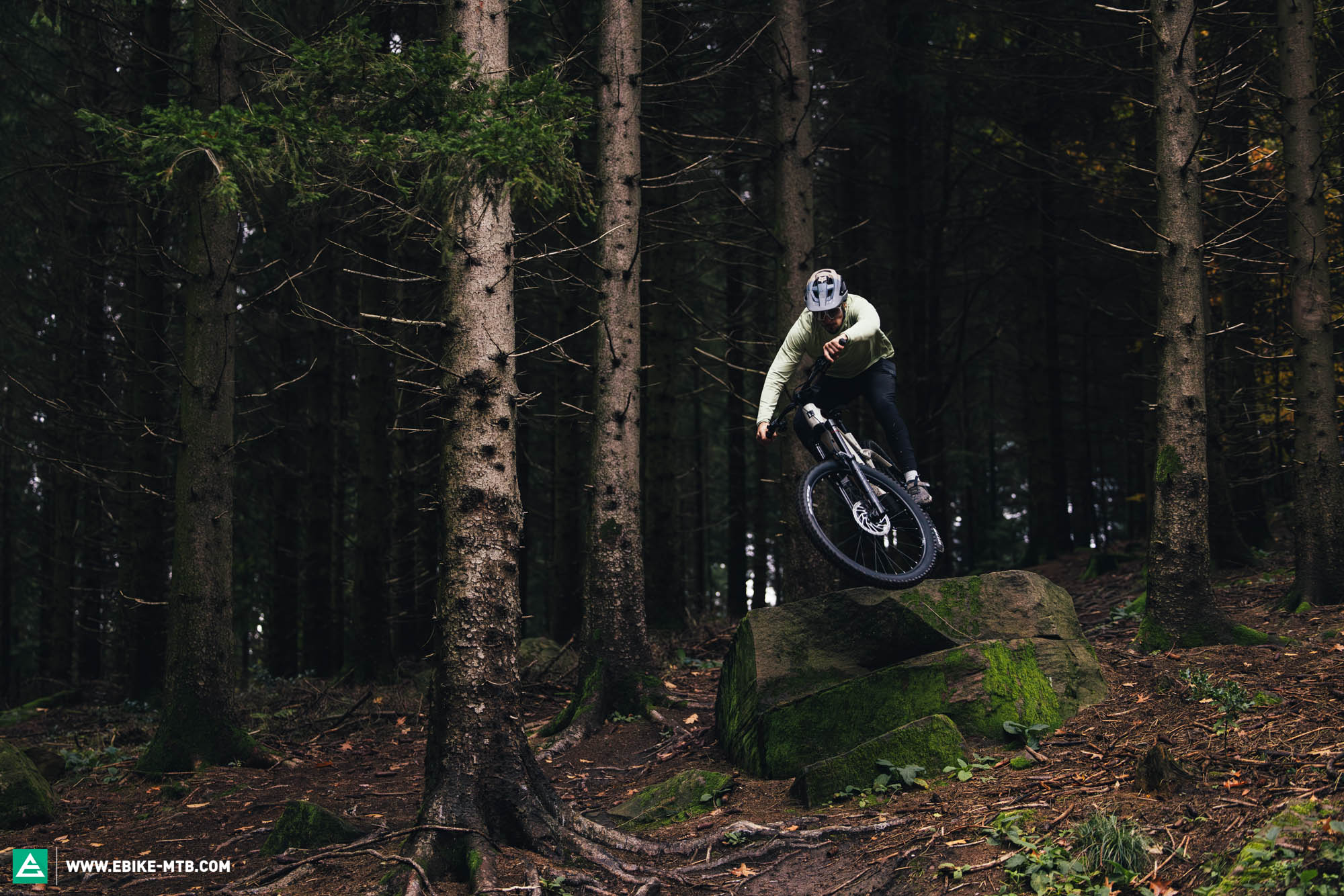
Haibike have stayed true to the angular styling of their earlier bikes, and as a result their distinctive design language has become immediately recognisable. Their first race-specific bike, the new HYBE, is no exception. The name is a sort-of acronym of Haibike, and the Hype the new bike is expected to generate. The HYBE takes on the world’s eMTB competition with 170/160 mm (f/r) of travel and the flagship model even comes equipped with Bosch’s tuned drive unit, the Performance Line CX Race motor, which provides even more direct, aggressive support between the tapes with its powerful Race mode.
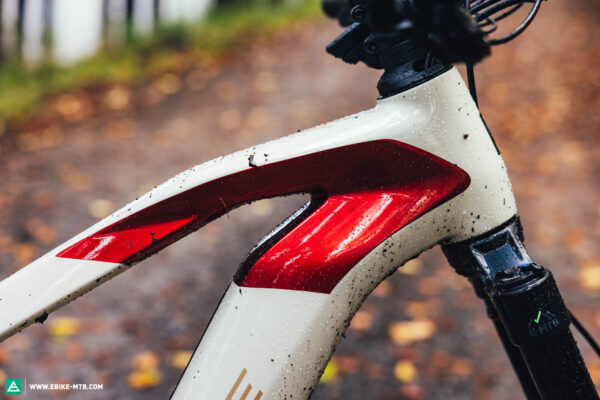

The HYBE hopes to take on the racing world, where it wants to stand up against the strongest competitors in the E-Enduro World Cup. But how deep did Haibike’s engineers dig into their bag of tricks? We tested the more affordable Haibike HYBE 9 on a variety of different trails, in all sorts of conditions. Our € 7,399 test bike tips the scales at 26.14 kg and combines a carbon front triangle with an alloy swingarm.
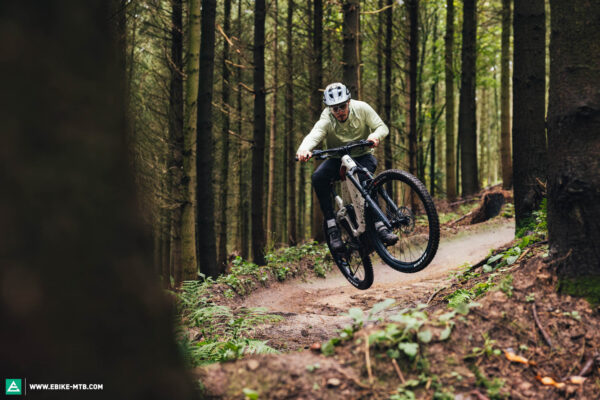
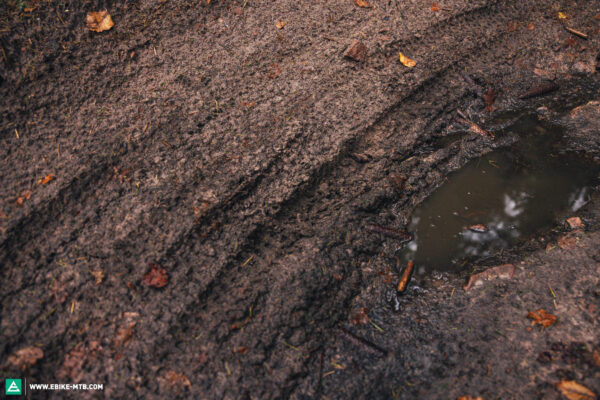

The new Haibike HYBE in detail – Poppy colours and familiar shapes
Haibike have never cared too much about blending in, with their distinctive frame design and loud, bright paint finishes forming part of their identity. That’s still the case with the new HYBE, which keeps the classic kinked top tube and angular seatstays, albeit with some of the corners smoothed out a little. The HYBE 11 flagship model is particularly flash, with a glistening metallic blue and purple finish, and pink accents – just in case the sparkly purple wasn’t bright enough for you.
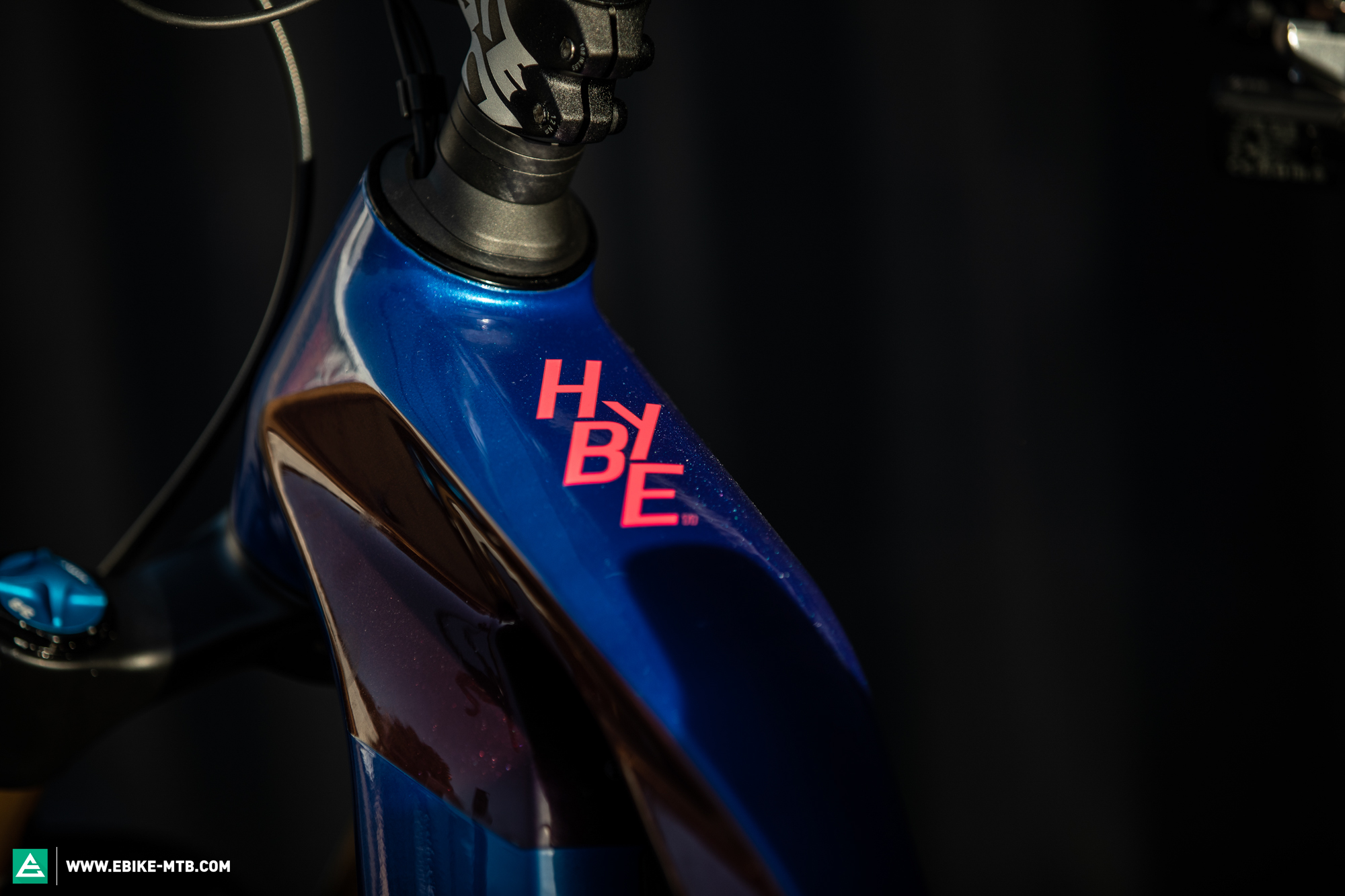
The more affordable HYBE 9 model, on the other hand, is a little more low-key, and relies on a more discreet cream/red finish. Perhaps this is just as well, as Haibike don’t offer any customisation options on their bikes. With the HYBE, Haibike have scaled down the decals on the down tube, but they’re still quite striking.
Just as striking is the integration of the motor system. The Bosch Performance CX drive is rotated upwards into the frame, which is meant to improve ventilation according to Haibike. At the same time, this frame design lowers the centre of gravity slightly and allows you to easily remove the battery from the bottom of the down tube. Just like the conventional Bosch Performance Line CX motor, the CX Race drive delivers 85 Nm of torque, which makes it powerful enough to negotiate even the steepest uphill stages. The motor forms part of Bosch’s Smart System, which lets you access and change the motor’s characteristics and enables countless connectivity features, including navigation. The motor system is paired with a beefy LED remote and bar-mounted Kiox 300 display. We would have preferred a more minimalist setup with a wireless, Bluetooth mini remote and system controller in the top tube, without a display on the handlebars. With both HYBE models, the motor draws its power from a 750 Wh Bosch PowerTube battery. To remove this, you just have to undo a 5 mm Allen bolt, remove the motor cover from the frame and pull the fabric strap on the battery to slide it out.
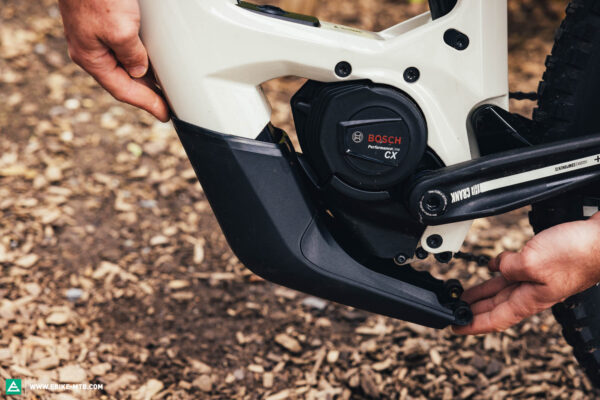
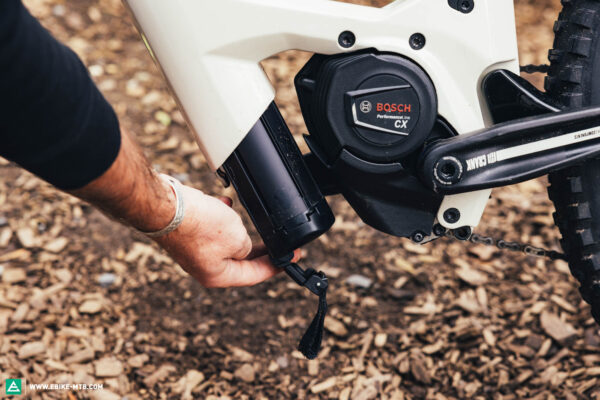
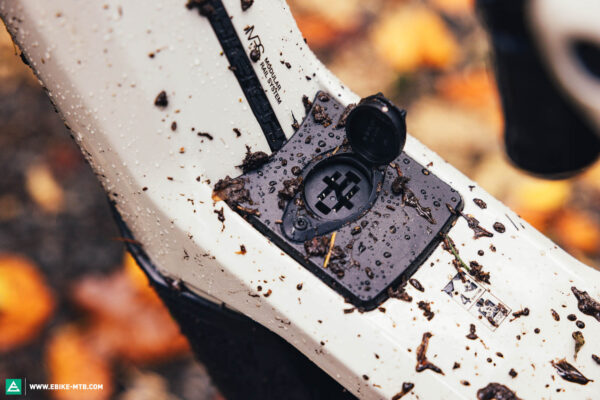
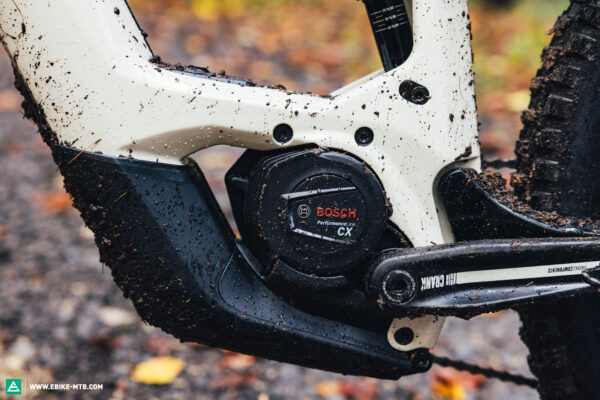
The HYBE features Haibike’s proprietary Modular Rail System (MRS) on the down tube, which allows you to secure a water bottle, lock and even a frame bag directly to the frame using Haibike’s in-house accessory holders. Available separately, these are an extremely practical way to optimise storage space on the bike.
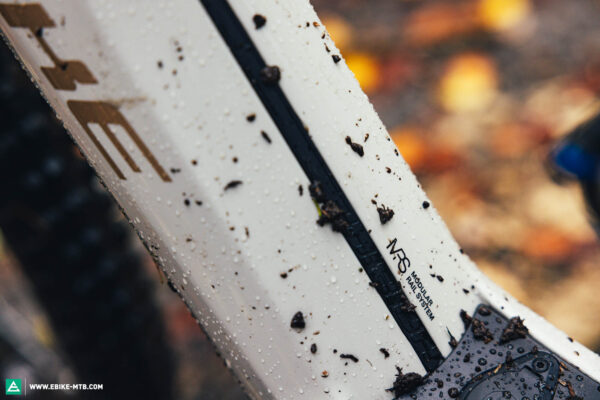
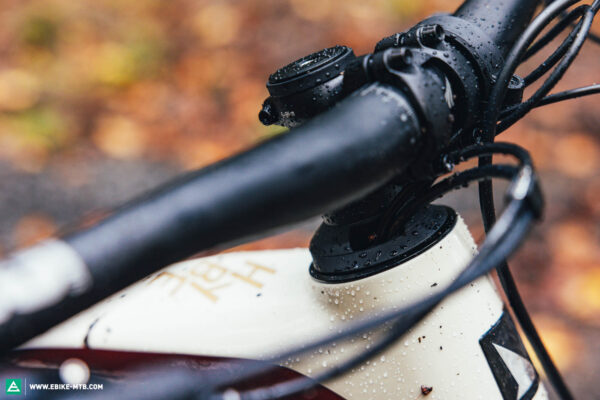
Haibike route the cables internally through the headset, disposing of cable ports on the frame altogether, ensuring a very tidy overall look. The rear shift cable and brake hose are routed internally through the chainstays too, but because of the fairly forward position of the rear pivots, the cables emerge a bit earlier than normal, leaving a long loop of exposed cable on each side..
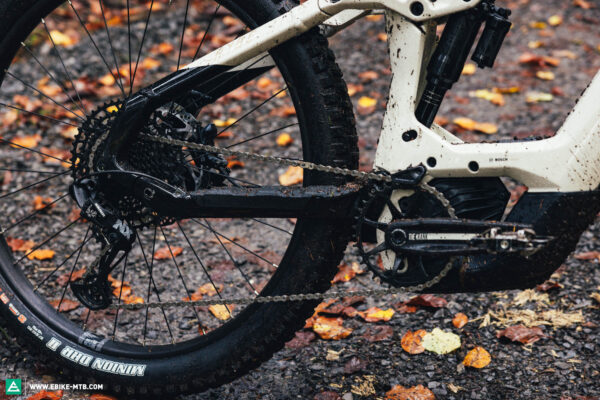
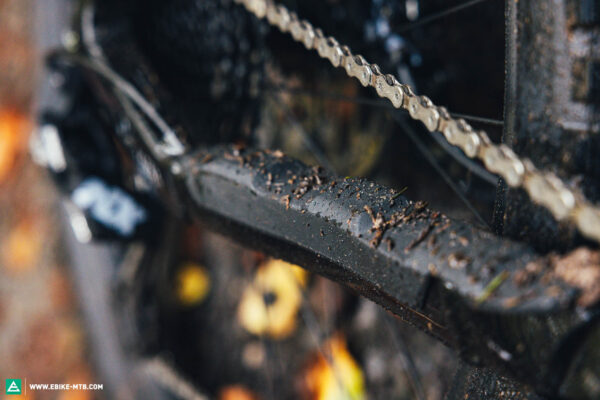
While the chainstay protector might not be the chunkiest out there, it’s big enough to prevent chain slap and paint chips. This is partly due to the shape of the swingarm: the chainstays are positioned far below the rear wheel axle, giving the chain more room to move downwards, thus reducing chain slap.
The two spec variants of the 2024 Haibike HYBE
Haibike are launching two versions of their new eMTB, the HYBE 11 and HYBE 9. The HYBE 11 flagship model costs a whopping € 10,000 and comes equipped with the finest components available on the market, while the HYBE 9 we tested is a little more humble. The biggest difference: The HYBE 9 relies on a conventional Bosch Performance Line CX motor rather than the CX Race version.
For the HYBE 11, Haibike rely on bling FOX Factory suspension with fancy Kashima coating, combining a FOX 38 fork and a FLOAT X shock, both with countless adjustment options. Powerful MAGURA MT5 four-piston brakes with 203 mm rotors front and rear do stopping duties, while shifting is taken care of by an electronic, 12-speed SRAM GX Eagle drivetrain. However, this is paired with a cheaper and heavier SRAM SX Eagle chain, which is quite a sneaky way to save money in our opinion. The travel of Haibike’s in-house dropper post grows with the frame size, offering 125 mm of travel in the smallest size S, 150 mm in sizes M and L and 175 mm on the biggest XL frame. However, long-legged riders will walk away empty handed, because the standard dropper posts are all on the short side, and are combined with long seat tubes across the board. The HYBE 11 rolls on a Mavic E-Deemax alloy wheelset. If you’re planning to use the HYBE for racing, we would definitely swap the stock tires, because Haibike deliver the bike with a MAXXIS Minion DHF in the thin EXO casing and hard MaxxTerra rubber compound at the front, and a Minion DHR II with the slightly tougher EXO+ casing and same hard rubber compound at the rear. For the kind of aggressive riding the HYBE was designed for, we would upgrade to the softer MaxxGrip rubber compound at the front and tougher Doubledown casing at the rear, which ensure increased puncture protection and better traction on wet, technical trails – because a puncture is the last thing you need while racing!
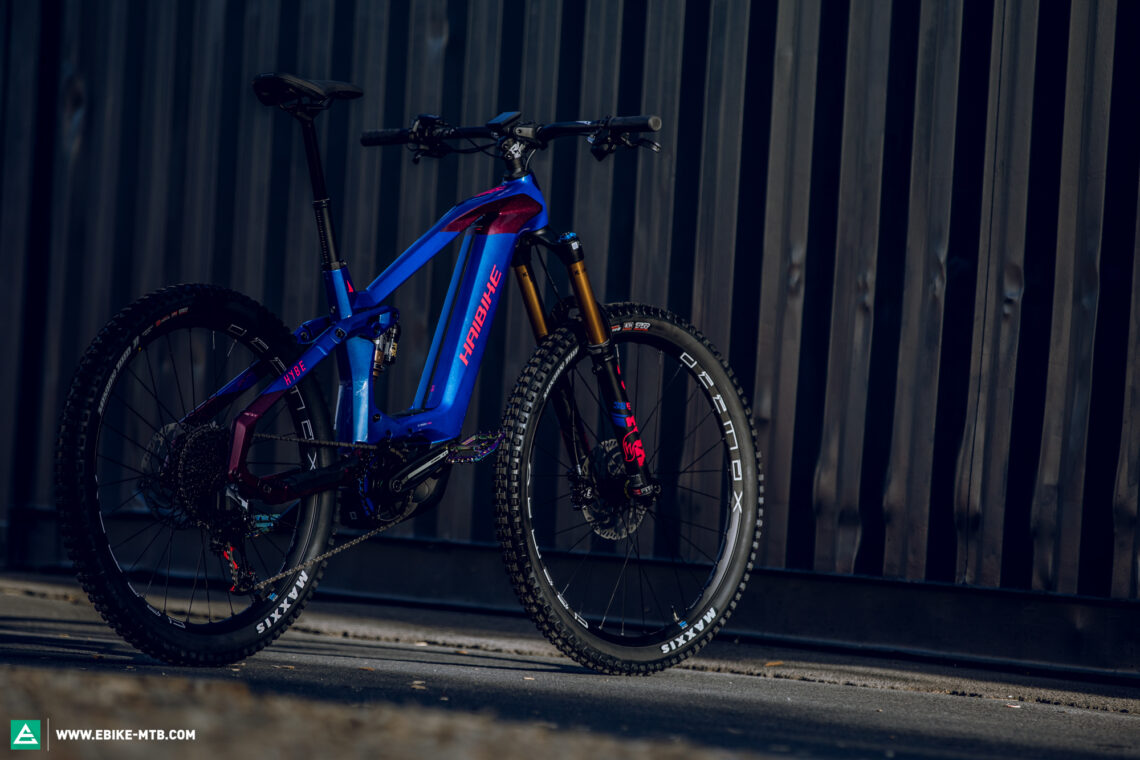
Haibike HYBE 11
€ 10,000
Specifications
Motor Bosch Peformance Line CX-R 85 Nm
Battery Bosch Powertube 750 Wh
Display BOSCH LED-Remote
Fork FOX 38 Factory 170 mm
Rear Shock FOX FLOAT X Factory 160 mm
Seatpost Haibike Dropper Post 125 - 170 mm
Brakes Magura MT5 200/200 mm
Drivetrain SRAM GX Eagle AXS 1x12
Stem Raceface Chester 35 mm
Handlebar Raceface Atlas 785 mm
Wheelset Mavic E-DEEMAX 29"/27.5"
Tires MAXXIS Minion DHF MaxxTerra EXO/ MAXXIS Minion DHR II MaxxTerra EXO+ 2.5"/2.4"
Technical Data
Size S M L XL
Perm. total weight 120 kg
Trailer approval yes
Kickstand mount no
Specific Features
Modular Rail System
The Haibike HYBE 9 we tested isn’t as glamorous as its high-end HYBE 11 counterpart and comes equipped with significantly cheaper components – but at € 7,399, it’s also over € 2,000 cheaper. The suspension consists of a RockShox ZEB Select RC fork and matching RockShox Super Deluxe Select+ shock. While for advanced riders, the limited adjustability of both the fork and shock could be a limiting factor, it’s ideal for beginners, making it easier to find the optimal settings. The HYBE 9 employs a cable-operated SRAM NX Eagle drivetrain – this will require a little more maintenance than the electronic setup on the HYBE 11, as the cables wear and degrade over time, reducing shifting performance. In addition, compared to the electronic drivetrain of the HYBE 11, the cable operated NX drivetrain feels significantly rougher when shifting under load. Shimano SLX four-piston brakes and 203 mm rotors ensure powerful and reliable deceleration, even on long descents. The HYBE 9 shares the same Haibike dropper post and MAXXIS tires as the flagship model.
Tuning tip: upgrade to a long-travel dropper post for more freedom of movement.
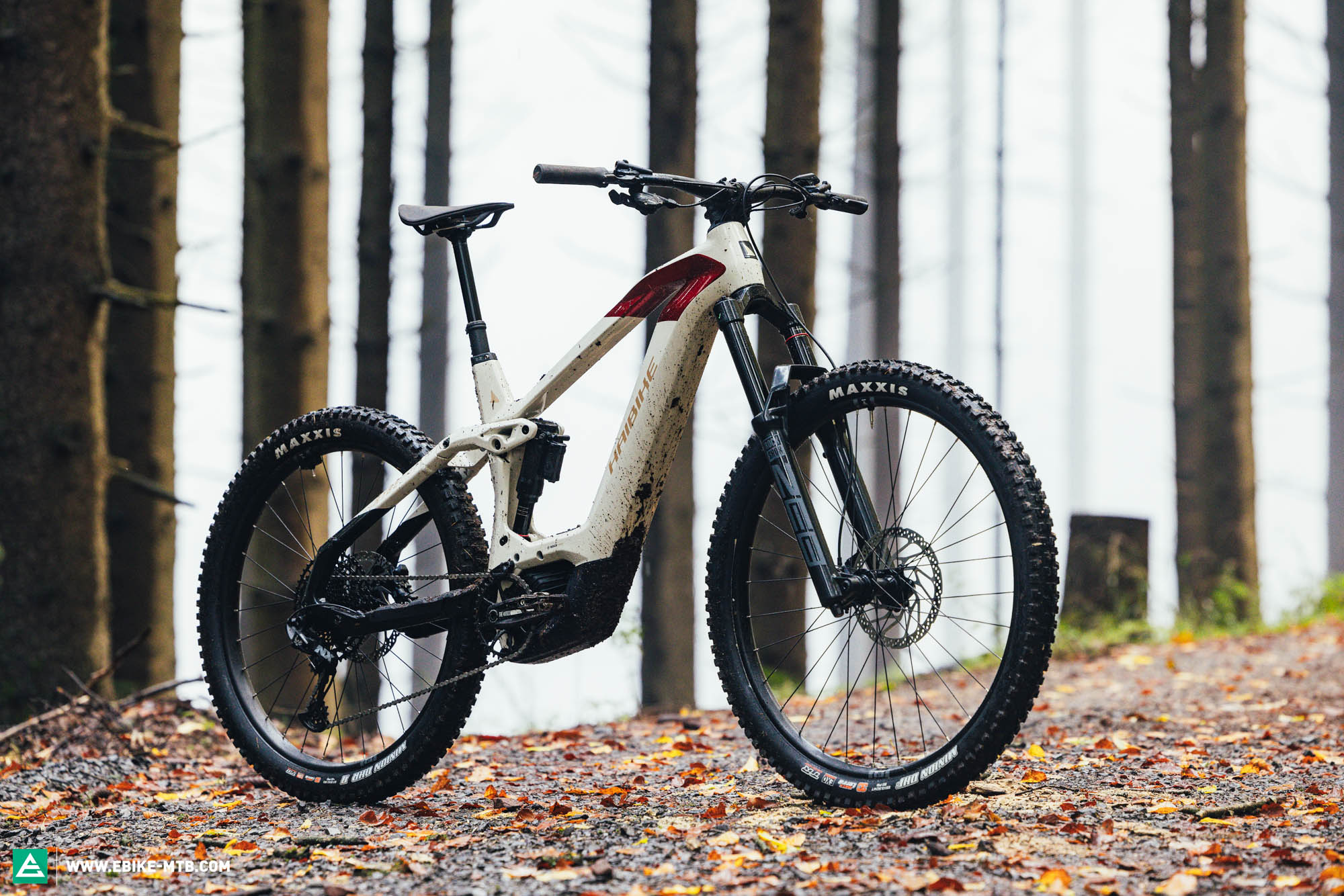
Haibike HYBE 9
€ 7,399
Specifications
Motor Bosch Peformance Line CX 85 Nm
Battery Bosch Powertube 750 Wh
Display BOSCH LED-Remote
Fork RockShox ZEB Select RC 170 mm
Rear Shock RockShox Super Deluxe Select+ 160 mm
Seatpost Haibike Dropper Post 125 - 170 mm
Brakes Shimano SLX 200/200 mm
Drivetrain Shimano SLX 1x12
Stem Haibike TheStem 35 mm
Handlebar Haibike TheBar 780 mm
Wheelset WTB ST i30 TCS 29"/27.5"
Tires MAXXIS Minion DHF MaxxTerra EXO/ MAXXIS Minion DHR II MaxxTerra EXO+ 2.5"/2.4"
Technical Data
Size S M L XL
Weight 26.14 kg
Perm. total weight 120 kg
Max. payload (rider/equipment) 93 kg
Trailer approval ja
Kickstand mount nein
Specific Features
Modular Rail System
The geometry of the 2024 Haibike HYBE 9
The Haibike HYBE is available in four sizes, S to XL, and is on the shorter side, with reach values ranging between 408 mm (S) and 500 mm (XL). At 64.5°, the head tube angle is pretty much average for a potent eMTB – neither too steep, nor too slack. Chainstay length is 455 mm across the range, which is quite long, especially considering the small 27.5” rear wheel. Since all frame sizes share the same chainstay length, the handling is likely to differ slightly between sizes. Our test bike in size L has 644 mm stack height, which makes for a tall, confidence inspiring front end. The seat tube is also pretty high at 470 mm and, coupled with the short 150 mm dropper post, might make for some uncomfortable situations for your undercarriage when things get gnarly.

| Size | S | M | L | XL |
|---|---|---|---|---|
| Top tube | 560 mm | 590 mm | 625 mm | 660 mm |
| Seat tube | 410 mm | 440 mm | 470 mm | 500 mm |
| Head tube | 100 mm | 110 mm | 120 mm | 130 mm |
| Head angle | 64.5° | 64.5° | 64.5° | 64.5° |
| Seat angle | 76.3° | 76.3° | 76.3° | 76.3° |
| Chainstay | 455 mm | 455 mm | 455 mm | 455 mm |
| BB Drop | 20 mm | 20 mm | 20 mm | 20 mm |
| Wheelbase | 1,191 mm | 1,223 mm | 1,260 mm | 1,296 mm |
| Reach | 408 mm | 435 mm | 468 mm | 500 mm |
| Stack | 626 mm | 635 mm | 644 mm | 653 mm |
The 2024 Haibike HYBE 9 on the trail
While Haibike’s marketing pitches this as a racing thoroughbred, we found that the upright pedalling position actually makes it pretty good for long days in the saddle too, whether you’re touring or racing. The high front end ensures a balanced weight distribution, which, together with the Modular Rail System, makes the idea of long tours even more alluring – with a water bottle and bike lock on the MRS, you’re also well prepared for a spontaneous pit-stop at the pub. Even in size L, the HYBE puts you in a rather compact pedalling position, which makes sense given the overall short reach values. When riding uphill, the pedalling position is still relaxed, which makes the Haibike HYBE 9 a great option for long tours through hilly landscapes. Only on very steep climbs does the front end tend to lift off the ground slightly, requiring you to put a little more pressure on the bars. The rear suspension bobs slightly but generates good traction, rendering the climb switch useless on long uphill sections.
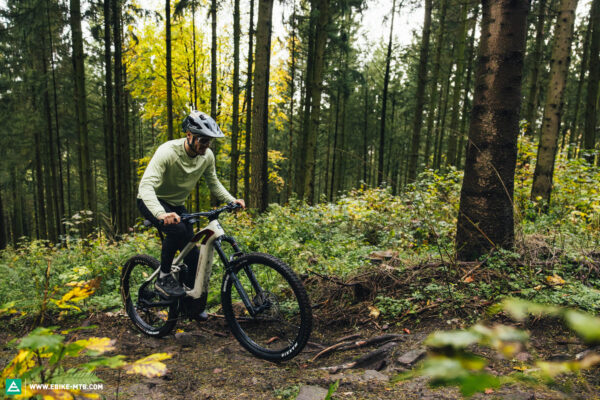
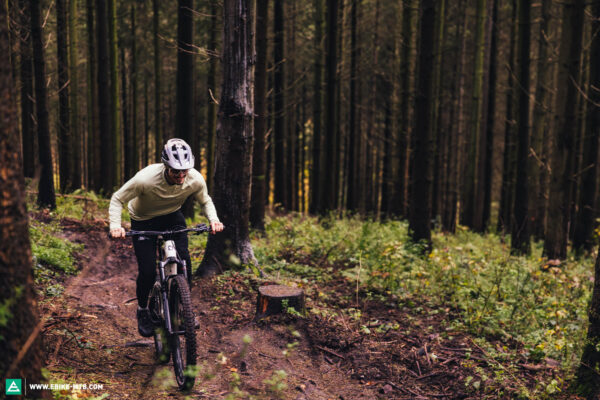
Tops
- Composed handling and plush suspension
- Modular Rail System MRS allows you to attach different accessories directly to the bike
- Fair price/performance ratio
Flops
- Dropper post is too short in frame size L
- Handlebars force you in a passive riding position
- Tires don’t do justice to the character and intended use of the bike
When riding uphill, the pedalling position is still relaxed, which makes the Haibike HYBE 9 a great option for long tours through hilly landscapes. Only on very steep climbs does the front end tend to lift off the ground slightly, requiring you to put a little more pressure on the bars. The rear suspension bobs slightly but generates good traction, rendering the climb switch useless on long uphill sections. The one thing that really affects the riding position significantly is the shape of Haibike’s in-house handlebars. These are pretty much straight – if anything, they almost feel like they’re bent downwards, forcing you into a passive riding position. Aggressive riders with “enduro elbows” should replace them straight away.
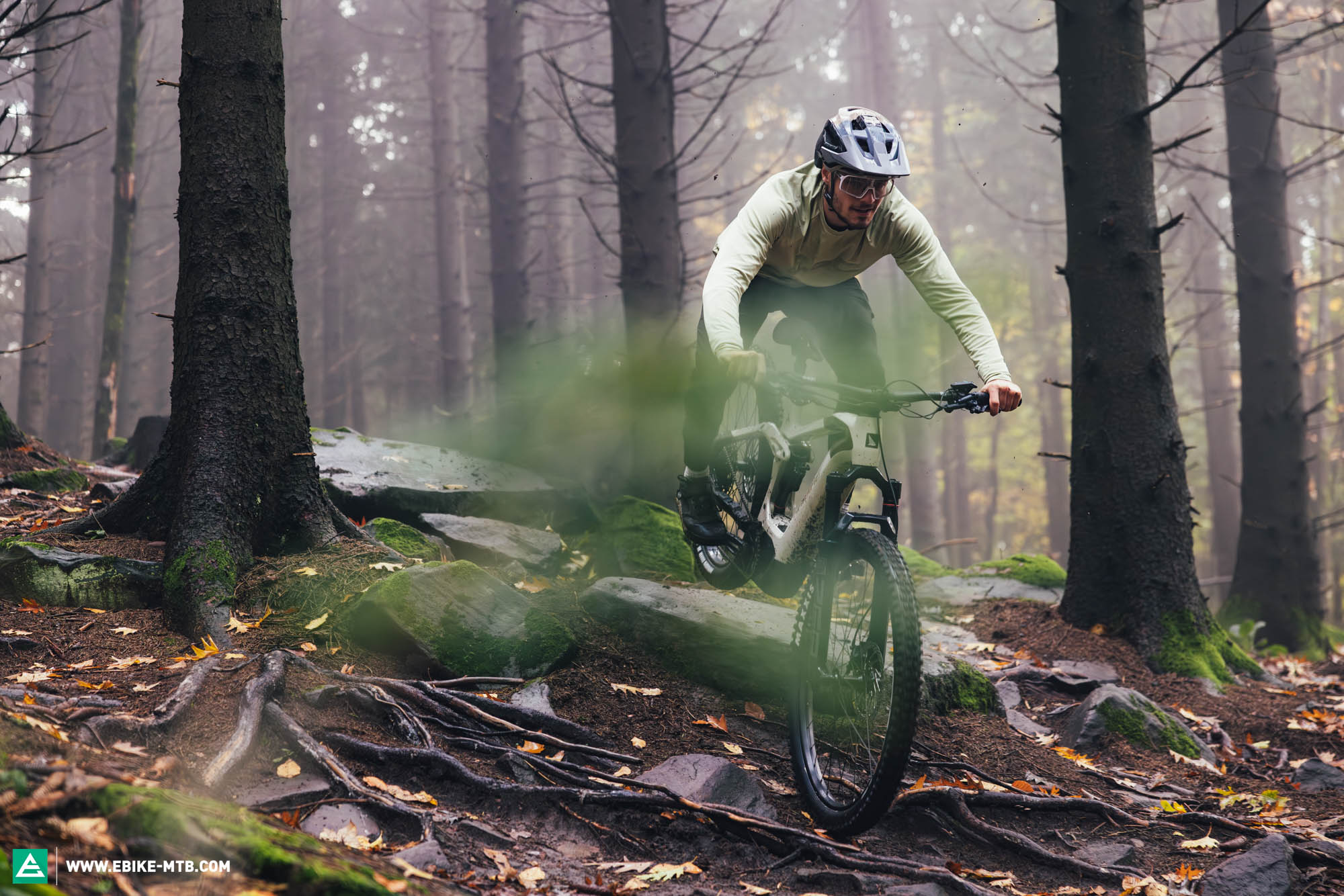

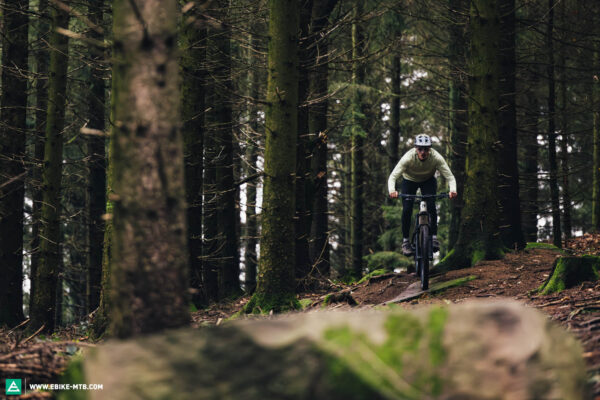
The Haibike HYBE 9 feels at home on fast, trough trails, where it flattens the trail into a gravel track.
When gravity takes over, the Haibike HYBE 9 inspires huge amounts of confidence. With its generous 170/160 mm of travel, the suspension evens out rough trail features, while the high front end inspires additional confidence, preventing unpleasant OTB moments. In open corners, however, you’ll have to actively weight the front wheel to generate traction.
The suspension is so plush that it provides very little feedback from the ground, and while this is great for passive riders who just hold onto the bars and hope for the best, it makes it harder for experienced riders who want to have a bit of fun with the trail. When carving through berms and pumping through rollers, the suspension absorbs the rider’s input like a sandbag, requiring great physical effort to spontaneously change your line. In addition, the unergonomic handlebars position your elbows close to your upper body, making it harder to actively push the bike and lean it into corners without dropping your torso.
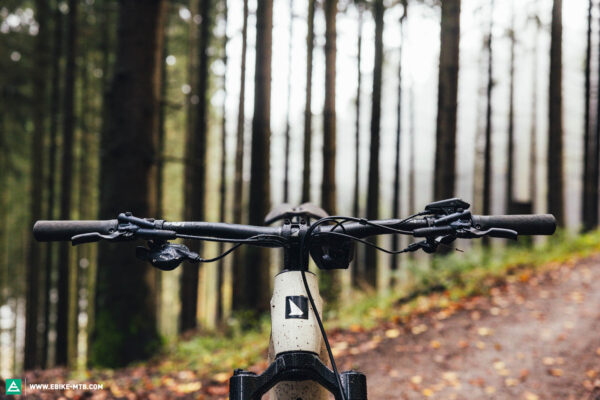
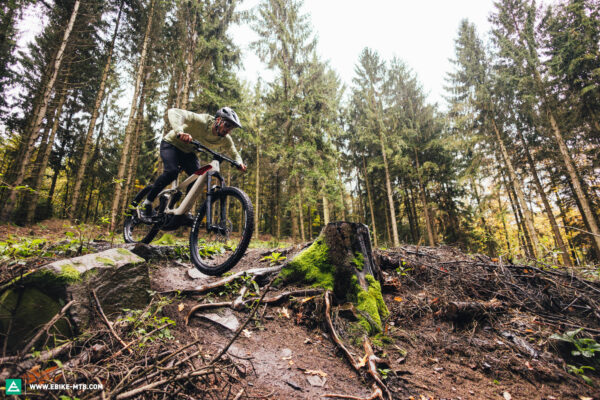
Tight trails with fast turns expose the dark side of the HYBE 9, which feels rather sluggish despite its small 27.5” rear wheel. This makes it harder to flick the Haibike around tight corners, due to a combination of the relatively long rear end and the plush rear suspension’s lack of support. As a result, the HYBE requires great physical effort to spontaneously change your line.
On steep descents, the short-travel dropper post and long seat tube cause the saddle to get in your way, restricting freedom of movement and making it harder to move your weight backwards, thus defeating the purpose of the smaller 27.5″ rear wheel. As a result, you have to either lower the saddle manually before every descent, or perhaps upgrade to a dropper post with more travel. The OneUp V2 dropper, for example, offers excellent value for money.
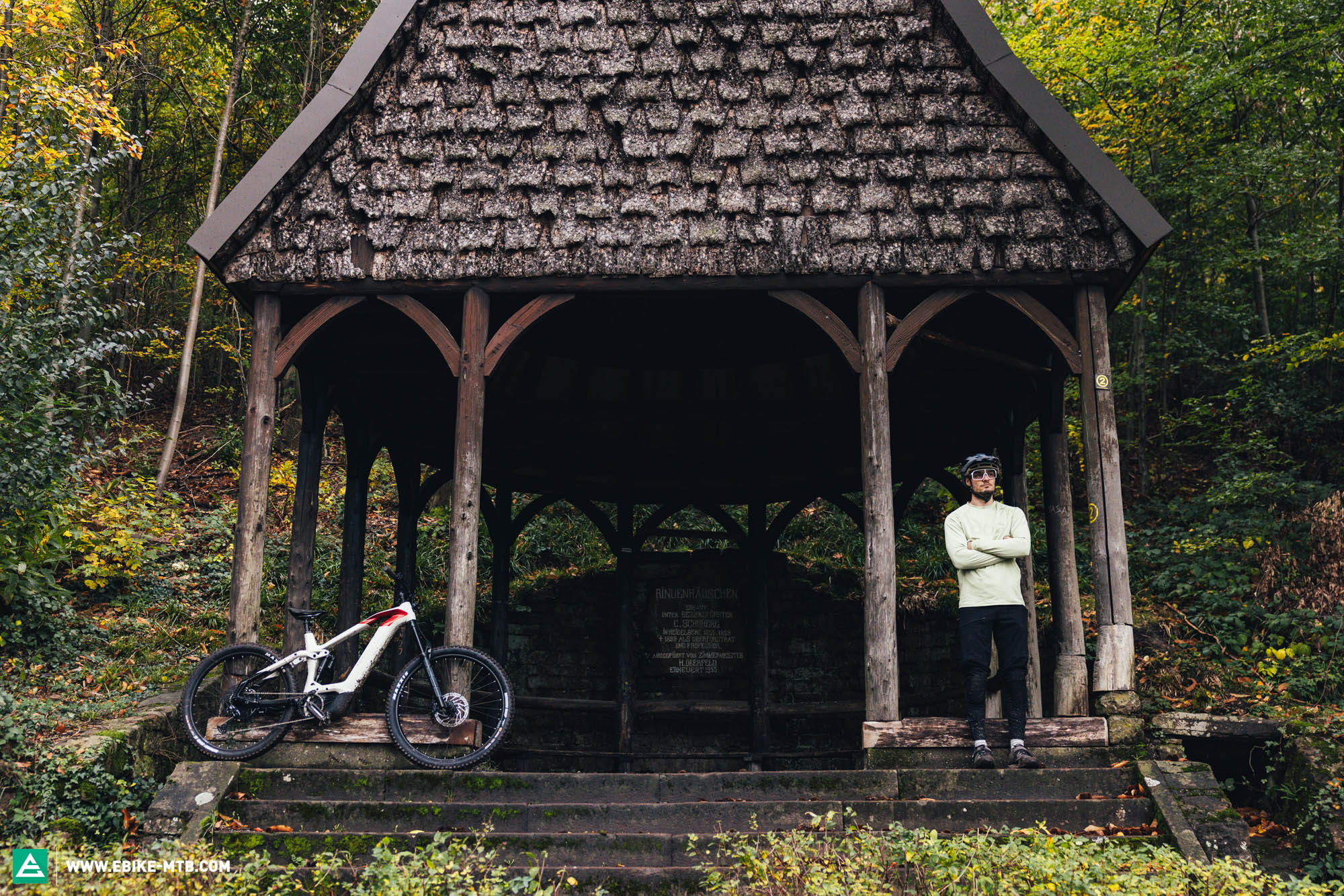
Who should take a closer look at the 2024 Haibike HYBE 9?
Contrary to Haibike’s bold marketing slogans, which categorise it as a purebred racer, our HYBE 9 test bike without the CX Race motor is more of a good-natured bike for newbies than a precise racing machine. Handling is sluggish but stable, inspiring a great deal of confidence and allowing beginners to glide over rough trails, provided they’re not expecting a jibbing machine. Tourers will like the clever MRS mounting points for accessories.
Active riders who love to play with the terrain won’t like the suspension’s lack of feedback, but a long-travel dropper post and more ergonomic handlebars would already improve the handling. If you value suspension performance and want a more responsive motor and electronic drivetrain, it’s worth reaching for the € 10,000 HYBE 11 flagship model.
Our conclusions about the 2024 Haibike HYBE 9
Haibike didn’t quite manage to deliver on their marketing claims, which is especially down to the sluggish handling. Nevertheless, the HYBE inspires huge amounts of confidence and also shines with good touring qualities and the sophisticated mounting system. With the € 7,399 HYBE 9, you also get a flashy look for a reasonable price. If you’re looking for some racing flair, you’ll have to fork out the extra money and get the 11 model, which is even flashier!
For more info visit haibike.com

Did you enjoy this article? If so, we would be stoked if you decide to support us with a monthly contribution. By becoming a supporter of E-MOUNTAINBIKE, you will help secure a sustainable future for high-quality cycling journalism. Click here to learn more.
Words: Julian Schwede Photos: Julian Schwede




